What exactly does it mean when we see a “check engine light” glowing on the dashboard? Just checking the engine won’t give a lot of information rather it is necessary to know where the problem is. Glowing “check engine light” does not usually indicate an emergency, but one should never ignore it for a longer time.
A person can still drive a car even if the check engine light is on without experiencing any kind of problem, but it is better to get the car checked as a glowing check engine light is not a good sign.
There are several reasons as to why the check engine light is glowing, but before getting into the reasons, we need to know what exactly does a check engine light means.
What does the “Check Engine light” mean?
Basically, a check engine light is a device which indicates that the Onboard Diagnostics (OBD) of a car’s computer has detected a problem in the car.
The Engine Control Unit or ECU is the unit that monitors the components of the car to detect any problems. When the ECU senses something wrong, it indicates the problem through the check engine light.
Check engine lights were invented with the purpose of making the jobs of professional mechanics a bit easier. But now, one can even figure out the problems indicated by the check engine light, without even going to a mechanic.
There are easy ways which you can use to solve the problems on your own.
Why is my check engine light on?
The only method to know the reason as to why the check engine light is on is getting it scanned by an OBD reading device.
OBD system was initially designed to keep the emission system to work properly. Emission problems are the most common problems which are detected by the check engine light.
Some of the most common issues indicated by the check engine light are stated below.
Suggestions for fix?
1. Loose fuel cap.
Did the check engine light glow just after you filled your fuel tank? If yes, then it means that either the gas cap is not on at all or even if it’s one, it is done improperly.
This problem, though has nothing to do with the car’s engine but the reason why the light goes on is due to a problem in the emission system in the car.
A loose gas cap can allow the fumes to escape from the car and into the atmosphere which can further harm the car’s fuel economy.
In some new cars, the removable gas caps have been substituted by gas doors which makes a loose or missing gas cap impossible unless one leaves the gas door open.
2. Oxygen Sensor.
As the name suggests, oxygen sensor senses the oxygen in the car. Specifically, it senses the amount of unburned oxygen flowing through the exhaust system of the car.
The sensor then indicates the car’s computer to regulate the fuel mixture burning in the car’s engine.
A damaged or broken oxygen sensor can cause an imbalance in air and fuel which can affect the efficiency and performance of the car.
3. Mass Airflow Sensor.
Just like the oxygen sensor senses the amount of unburned oxygen flowing in the exhaust system of the car, a mass airflow sensor measures the amount of air coming through the intake. A damaged MAF is as bad as a broken oxygen sensor and has the similar effects on the car.
The only difference is that, if the MAF is highly damaged then it can only be repaired by a mechanic and a simple replacement of the sensor won’t solve the problem.
A bad mass airflow sensor can easily be detected by noticing the difference in the working of the engine.
4. Catalytic Converter.
Catalytic converters are one of the mandatory equipment in cars in the US since 1970. Catalytic converter reduces the number of toxins in the exhaust system of the car. It turns carbon monoxide into carbon dioxide and water.
A defective catalytic converter is more dangerous than a detective MAF or a broken oxygen sensor. A defective catalytic converter will make your car fail an emission test if it is in the state of getting an emission test.
In order to make the car environmental friendly and moreover keeping the car legal on the road, one needs a functional catalytic converter in the exhaust system of the car.
What to do when the check engine light is on?
If one finds the check engine light on, then, first of all, don’t get panic but at the same time do not assume that everything is fine with the car. The first step is to get the car diagnosed properly by a professional mechanic so that further damage can be avoided.
It is better to take the car to a professional mechanic, that you trust, to get it diagnosed. The mechanic would then scan the check engine light with a professional graded equipment which will analyse the issue and try to repair it. A glowing check engine light can be an opportunity to even get your car serviced.
If you are a DIY mechanic and have all the types of equipment required, then you can resolve the issue in your garage. Another method to get your car checked would be going to a parts store for a proper scan. A parts store would scan the glowing check engine light freely, with the hope that you would buy parts from their store.
A scanner would be plugged in the diagnostic port of the car to know about the issue. The plug would then find a code and would search for the meaning of the code in a computer. After the issue and the cause of the problem is found, it’s up to you if you want to fix it on your own or do you need professional help to solve the problem.
If you are a tech pro and have knowledge on how to repair a problem related to car engine then you can use that talent now. All you need is some professional types of equipment which are easily available in the market.
There are different types of OBD scanners available in the market which can be bought for diagnosing any problems related to the car engine.
Some scanners would simply tell you the code while some would have colour codes and give detailed information about the problem. You can even get software and hardware equipment for better analysis of the problem that too in your own garage.
A diagnostic hardware comes with some type of plug to insert in the diagnostic port of the car. This port is a d-shaped female plug, located underneath the steering column.
The standard systems used nowadays is called OBD-II, whose codes consists of a letter followed by four numbers. OBD-II can detect more than emission problems. The different letters used can tell specifically about the problems detected by the scanner.
- P indicates powertrain
- B means body
- C means chassis
- U indicates a problem in the network.
These letters used makes it easier to understand the problem. One can get a rough idea about the issue from the letters before scanning the code on the computer. The four digit number or, to be more specific, the code gives the actual problem related to the vehicle.
If the scanner that you are using cannot decode the problem for you, then you can google the code and get the exact information about the issue.
The bottom line.
The check engine light won’t be a problem as long as the vehicle is properly serviced and diagnosed.
With the growth of technology, there have been many advancements in the vehicle industry too. One of the most applicable and useful technology is the Onboard Diagnostics and Engine Control Unit which allows the vehicle to communicate through a software media.
If the emission system of the car is working in a proper manner, then the performance and efficiency of the car get enhanced. OBD makes it easier to maintain the efficiency of a car.
With the help of OBD and ECU, one can easily know about the problems related to the engine. An OBD scanner can be the most useful device one can inherit and can be used for solving the issues related to the engine of the vehicle.


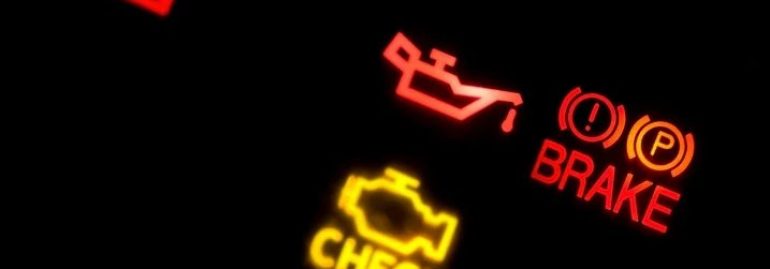

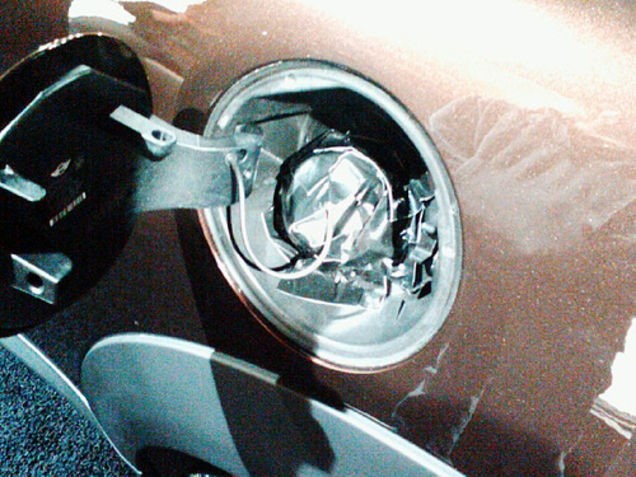
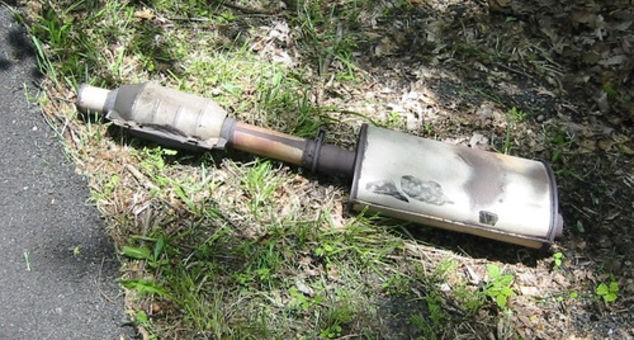
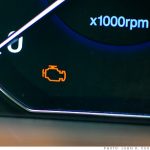
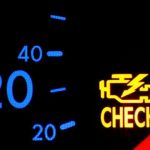
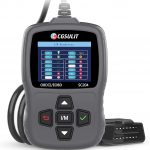
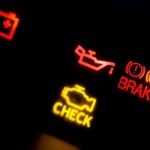
How to read the codes: When the Service Engine Soon (Check Engine) light comes on, the ECM has detected a problem with one of the sensor circuits in the car, and it sets a trouble code. The ECM holds stored trouble codes in memory as long as it has power from the battery. To retrieve the stored trouble codes, do the following:
1) Remove the black trim plate on the center console where the cigerette lighter is.
2) Take a paperclip or wire, and ground the two terminals on the top, closest to the passenger side of the car.
2) Watch the Service Engine Soon (Check Engine) light.
More about “Check Engine Light”:
Onboard Diagnostics II (OBD II or OBD2, OBD-II) is a second-generation emissions diagnostic system required by U.S. EPA on all 1996 and newer vehicles. It includes many functions. The two main one are:
1. Activating the Check Engine light on your dash (also called a “MIL” or Malfunction Indicator Light) and storing a Diagnostic Trouble Codes – (DTCs) indicating what the problem is.
2. Storing engine parameter identification data (PID) such as throttle position, barametric pressure, coolant temperature, oxygen sensor output voltage, …
The service industry calls the Check Engine light on your dash an “MIL” or Malfunction Indicator Light.
It shows three different types of signals. Occasional flashes show momentary malfunctions.
It stays on if the problem is of a more serious nature, affecting the emissions output or safety of the vehicle.
A constantly flashing MIL is a sign of a major problem which can cause serious damage if the engine is not stopped immediately.
In all cases a “freeze frame” of all sensor readings at the time is recorded in the central computer of the vehicle.
Most of the causes for the Check Engine light are emission control problems checks specified by the California Air Resources Board (CARB) and the Environmental Protection Agency (EPA) and will not damage your car if you wait until you get home to have them fixed.
However, you should check your dashboard gauges and lights for indications of low oil pressure or overheating.
These conditions mean you should pull over and shut off the engine as soon as you can find a safe place to do so.
Ignore the warning, and you could end up damaging expensive components. It also can be a sign that your car is getting poor fuel economy and emitting higher levels of pollutants.
— Look for a serious problem that requires immediate attention. Check your dashboard gauges and lights for indications of low oil pressure or overheating. These conditions mean you should pull over and shut off the engine as soon as you can find a safe place to do so.
— Try tightening your gas cap. This often solves the problem. Keep in mind that it may take several trips before the light resets. Some vehicles have a separate indicator that warns of a loose gas cap before the condition sets off the “check engine” light.
— Reduce speed and load. If the “check engine” light is blinking or you notice any serious performance problems, such as a loss of power, reduce your speed and try to reduce the load on the engine. For example, it would be a good idea to stop towing a trailer. Have the car checked as soon as possible to prevent expensive damage.
— Have the code read and the problem fixed. If you want to diagnose the malfunction yourself, you can buy a scan tool at most auto parts stores. But trouble codes (e.g. “Secondary Air Injection System Malfunction”) are frequently hard to resolve, unless you have a good knowledge of automotive diagnostics, you’re probably better off taking the vehicle to a professional. Some automotive parts stores will read and interpret the code for you without charge. Unless there is an easy fix, they may simply refer you to a mechanic. GM cars with OnStar can read the code remotely.
— Don’t go for a state emissions test. In a late-model car, an illuminated “check engine” light probably is a sure sign your car will fail the test. In some states, it’s an automatic failure, even if the problem was nothing more than a loose gas cap. By the way, don’t bother trying to fool the inspection station by disconnecting the battery or using any other method to erase the trouble code and turn off the “check engine” light. Your vehicle’s computer will let the inspection station know that its codes have been erased, and you’ll just have to go back again.
A check engine light on your vehicle can be a sign of various problems. Sometimes, it is completely functional. In other cases, it may mean that something is wrong with your emissions control system. In either case, you must immediately bring your vehicle to a mechanic for a proper diagnosis. Here are some helpful hints for drivers who are faced with this issue. To be safe, you must drive your vehicle very carefully if it’s on.
The check engine light on your car is a warning that something is wrong with your engine. This yellow or red icon can appear in the middle of the dashboard, just behind the steering wheel, and indicates that routine service is needed. It is important to take immediate action if you notice that the check engine light starts to flash more than 6 times in a row. It may be an indicator of a larger problem, such as a blown fuse or a damaged alternator.